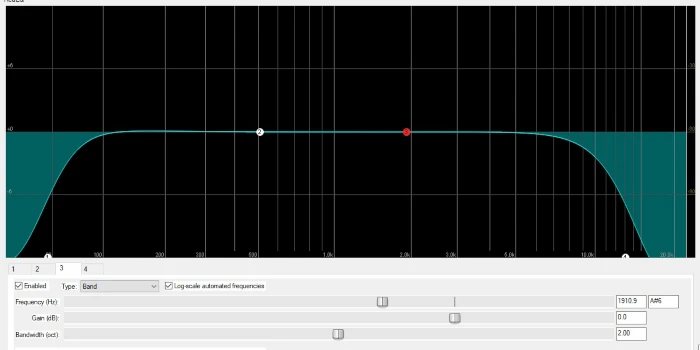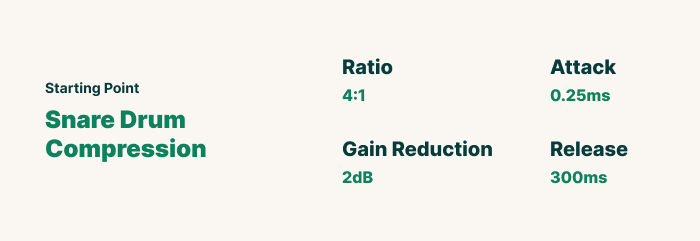Mixing a snare drum is very crucial for any type of song. The power, punch, and rhythm come from a snare. So, the tone and sound of a snare drum are very important.
There is no specific way to mix snare but there are some general guidelines. Every snare is different. So, each needs a particular approach.
How To Mix Snare
I will show you the blueprint to snare drum mixing and then you can try it on your mixes. Of course, you can improvise and make experiments. Music production is subjective and the goal is to make the sound you like.
1. EQ Snare Drum
Firstly, let’s talk about EQ because it could be the most important thing not only for mixing snare but mixing kick drums or any other instrument.
EQ is the tool for cutting or boosting frequencies. But be careful. Don’t overdo it or you will ruin your mix.
When you apply EQ to snare the first thing is removing all excessive frequencies. And these are the very low and high frequencies. For the snare, these are frequencies below 150Hz and above 8kHz.
You do it with high-pass and low-pass filters. Most modern EQ plugins have this feature. Just create HPF and LPF and cut unnecessary frequencies. Frequencies will be different for each snare but start with a general 150Hz and 8kHz.

After you remove these frequencies the snare will sound cleaner. And then you should start cutting and boosting. According to the general guide, find the sweet spots and boost them. Do the opposite to the boxy or muddy frequencies.
Also, pay attention to other instruments. Some instruments could occupy the same frequency. So, it’s important to avoid frequency overlap. Try to separate instruments and make sure that you hear each instrument.
If you want to know more about snare drum frequencies and mixing, check out my snare EQ cheat sheet.
2. Compress Snare Drum
Compression is a very subjective topic. Some engineers like mild compression and some of them use heavy compression. Also, it depends on the music genre and type of song or snare drum.
The main goal of using compression is to make the sound even and consistent. Also, the compressor can make sound powerful, punchy, and somewhat louder.
With a compressor, you can set threshold, ratio, attack, release, etc. With these options, you can try different settings and choose the one where your snare sounds good.
Overcompression will make the snare dull and lifeless. It will remove dynamics. And that’s not good. Music must be dynamic. So, with the help of a compressor, you should make the snare sound consistent and retain dynamics at the same time.

As a general guide, the 4:1 ratio is a good starting point for a snare drum. Then set the threshold. Try not to exceed 3dB gain reduction. You don’t need too much compression. As long as the sound becomes consistent, it’s enough.
Then tweak attack and release options. Fast attack and release will create power and punch. And slow release and attack will make the snare smoother. Also, if you set a fast attack, there will be no transients. So, have that in mind.
This is just a general guide and you should use it as a blueprint. But when it comes to individual tracks and mixing, everything depends on you and your preferences.
3. Add Saturation To Snare
You see that many times engineers use some kind of saturation on the snare. And it’s a common practice. But do snare drums need distortion? Well, it depends.
Use of saturation while mixing drums is used when you want to add a bite or additional attack. Also, distortion or saturation helps the snare to cut in the mix. In other cases, saturation is a part of the snare sound.
So, depending on what you want to achieve you can use saturation. If you want to add a little attack to your snare, use soft or mild distortion. It will not change the sound. Saturation will add a little bite and the snare drum will cut better in the mix.
The saturation settings for snare or other instruments are very subjective. Remember, the goal of using saturation plugins is to add a little bite to the snare.
How Loud Should Snare Be In A Mix?
Snare should be the loudest drum instrument in general, with a good starting point of around -6dB. During gain staging, it’s critical to create balance among the drum tracks and ensure that each instrument is heard, with the snare being the primary and most prominent instrument to give the song power and punch.
Where Should Snare Sit In The Mix?
The critical frequency range for the snare’s attack and smack is 1500Hz to 4000Hz, which is required for producing a great snare sound. Increasing the frequencies between 5kHz and 8kHz can add air and ring to the snare, but it is not required.
How To Make Good Snare Sound?
Simply adjusting the volume will not result in a great-sounding snare. You’ll need two main tools: an equalizer and a compressor. Knowing the frequency range of a snare drum makes applying EQ easier. Any type of EQ or compressor, whether plugin or analog, will work. To add more bite and space, additional tools such as saturation and reverb may be required.
Conclusion
Mixing the snare drum is a very important step in mixing. Drums are the power of a song and the main rhythm source. Drums must sound perfect. But it also must sit well in the mix. Mixing the snare is just one step in this process. Use this post as a general guide or a blueprint, try it on your mixes, and everything will be ok.
